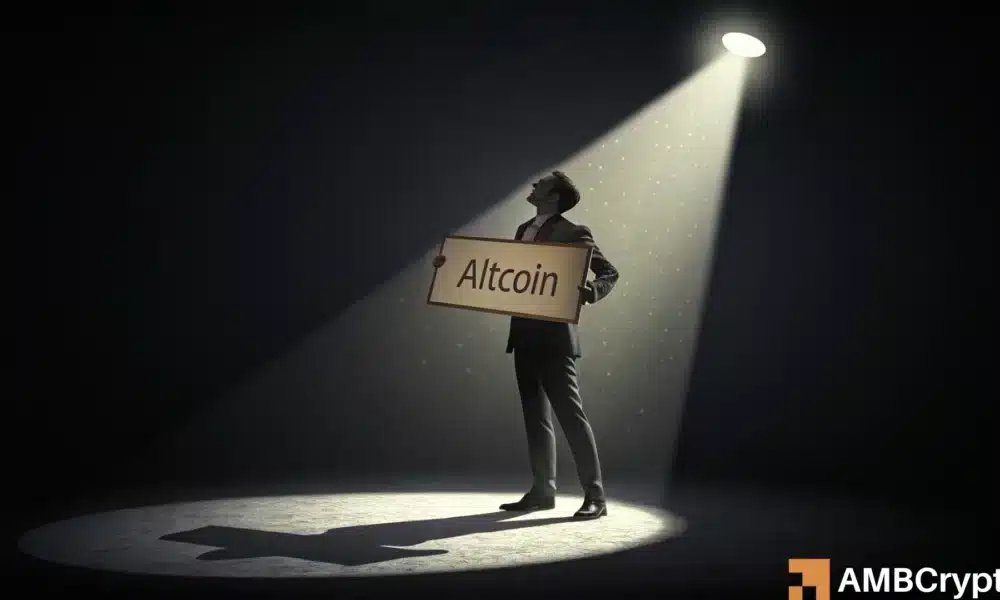Analyzing the Current Landscape of Altcoins: Is Another Cycle on the Horizon?
The cryptocurrency market has experienced significant fluctuations, particularly regarding altcoins. Recent data shows a notable decline in interest and participation within this sector. Specifically, Google search interest for the term “alt season” has plummeted by over 50% within just a week, raising questions about whether another altcoin cycle is becoming increasingly unlikely. With Bitcoin dominance (BTC.D) lingering below the critical 60% resistance mark, the market appears ripe for a potential shift, setting the stage for altcoin rotation.
Bitcoin has historically been the bellwether of the cryptocurrency market, and recent statistics indicate its current trajectory. Bitcoin’s market capitalization has shrunk by approximately $230 billion from its peak of $2.48 trillion, marking an 8% drop from its all-time high of $124,000. Ten days into this market phase, it is essential to remember past cycles for context. In late June, BTC.D reached a high of 65% before experiencing a substantial pullback. Interestingly, during that time, the total market cap excluding Bitcoin (TOTAL2) skyrocketed from $1 trillion to $1.7 trillion over just two months. This isn’t merely a standard altcoin cycle; it was characterized by a specific “altcoin” rally that occurred alongside Bitcoin’s recovery from its significant low.
As the market dynamics evolve, there are signs that the current environment could potentially lead to another altcoin cycle. Bitcoin recently struggled to break past the $117,000 resistance level, failing to establish it as new support. In this context, the risk appetite for investors is still relatively restrained, which could prompt capital to migrate toward alternative assets in search of better returns. Adding another layer to this analysis is the noticeable dip in Google searches related to alt season, which hit a peak of 100 on August 13, only to spiral down to 13. This drop serves as a clear indication that FOMO (Fear of Missing Out) is still not fully activated, leaving altcoins in a rather tenuous position.
It’s crucial to compare the current market conditions with previous cycles, particularly the election cycle, which showed a different narrative. During that time, BTC.D dropped to 54% within three weeks, while TOTAL2 surged impressively to $1.7 trillion. The Altcoin Season Index climbed dramatically, soaring past 85 and solidifying that the market had entered a full-blown alt season. The present situation, however, showcases a paradox: Although BTC.D and TOTAL2 exhibit alignment, the Altcoin Season Index remains stubbornly below the 60% threshold. This stagnation signals that while there may be potential for growth, the prevailing FOMO hasn’t yet materialized.
From an investment perspective, the cautious nature of the current market may deter many from plunging headfirst into altcoins. Investors might prefer to wait for more concrete indicators of a revival before reallocating capital from Bitcoin to altcoins. Historically, cycles of volatility often yield significant opportunities for gains, but they also necessitate careful analysis and timing to optimize potential returns. Market observers will continue to watch metrics like BTC.D, TOTAL2, and the Altcoin Season Index closely to identify any actionable insights.
In conclusion, the current landscape is characterized by uncertainty, with Bitcoin’s recent performance dictating the course of altcoins. Despite some signs hinting at the possibility of an upcoming altcoin rotation, market sentiments remain cautious due to declining search interest and lack of substantial gains. As the cryptocurrency space evolves, investors will need to stay vigilant and informed to capitalize on future opportunities, ensuring they are prepared for a potential resurgence in altcoins. With a mix of strategy and informed decision-making, navigating this complex environment could lead to fruitful outcomes for those willing to take calculated risks.


